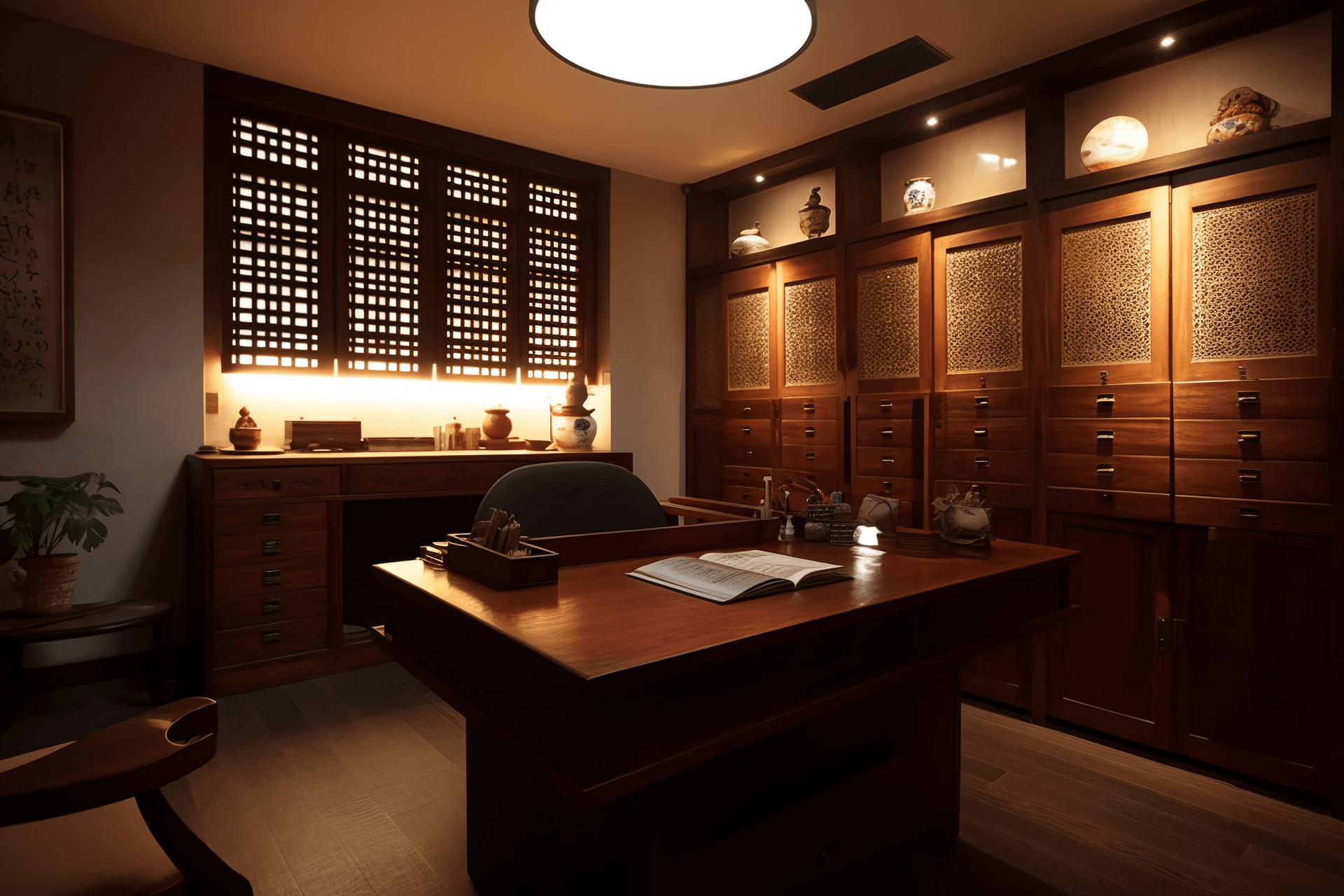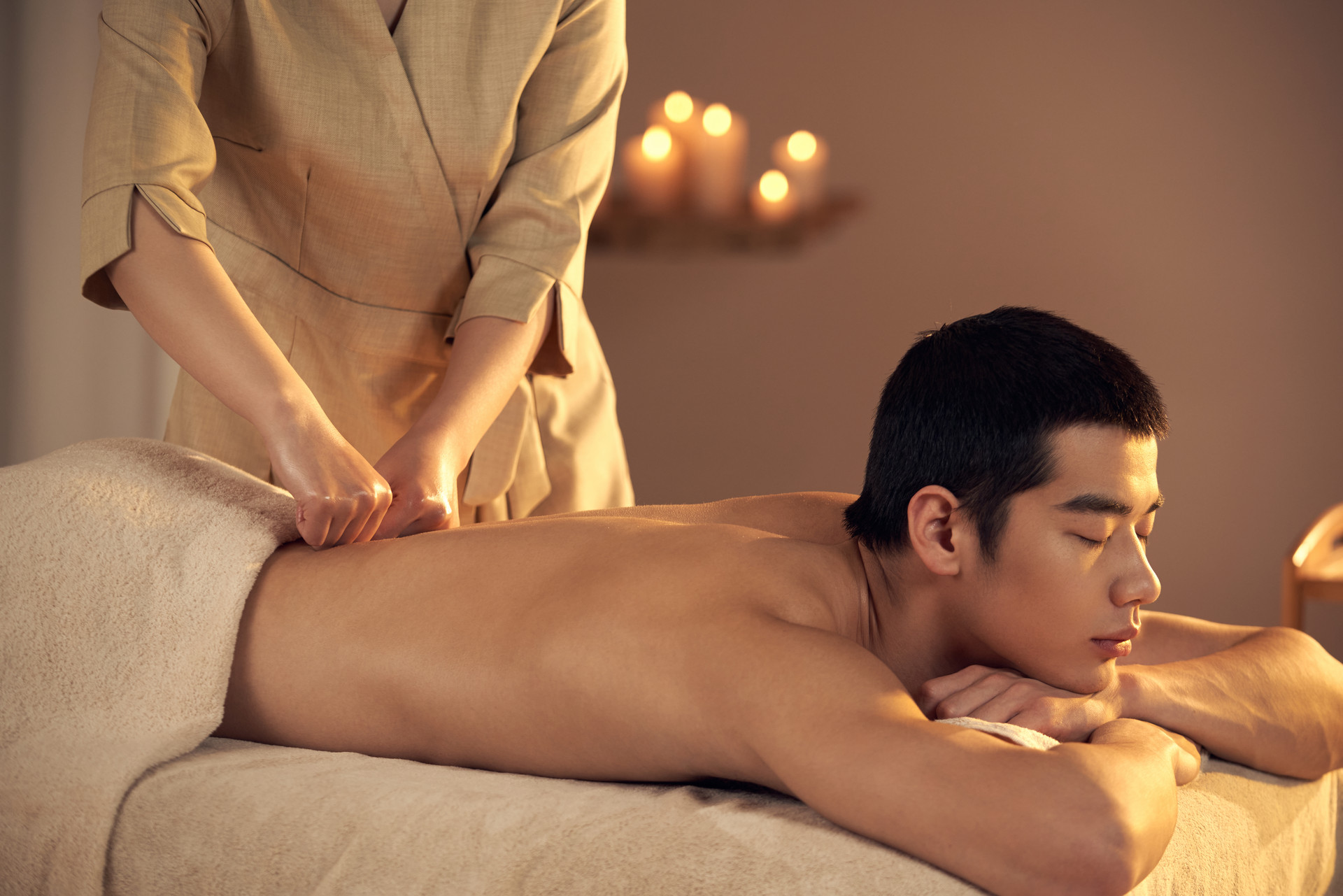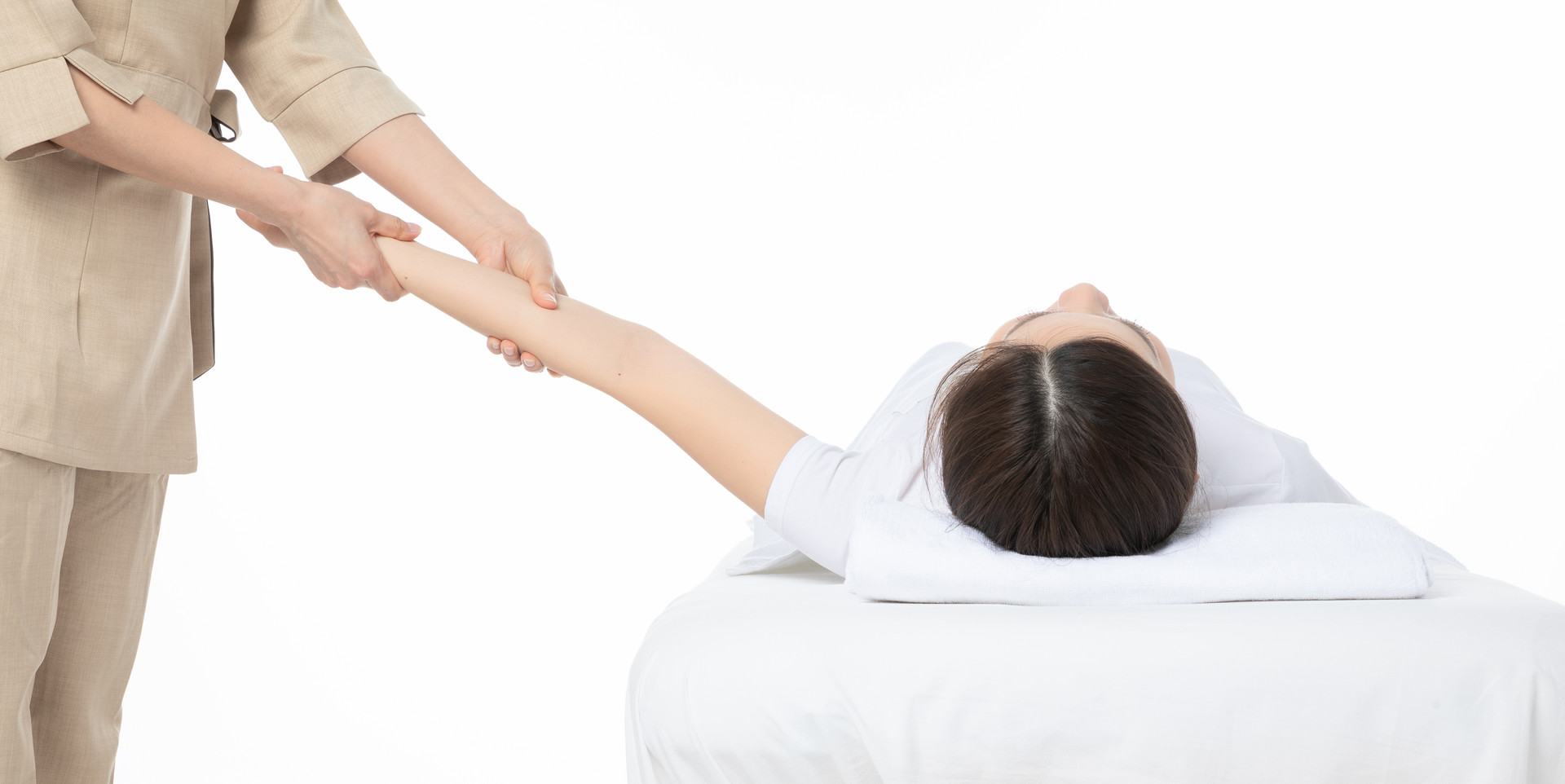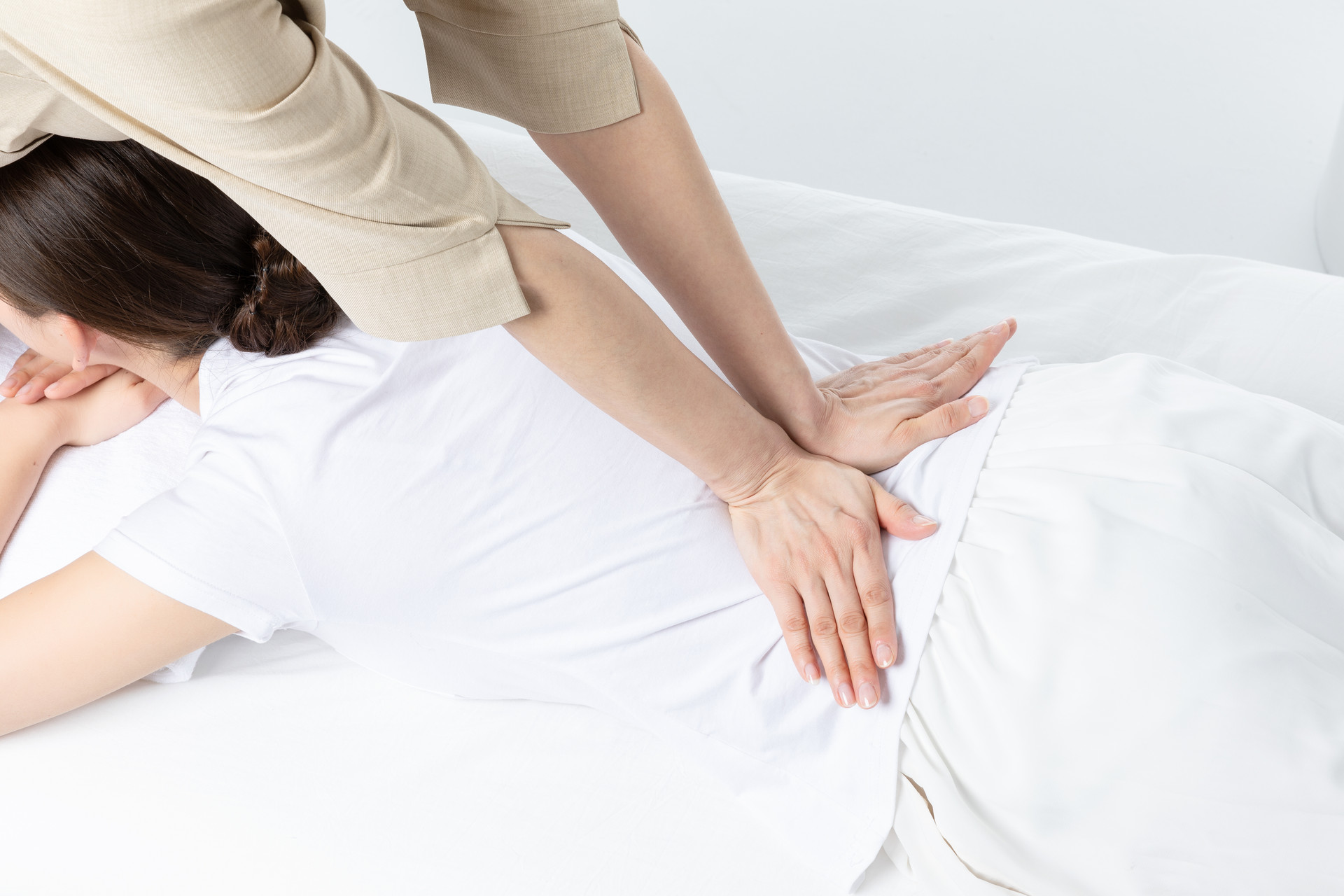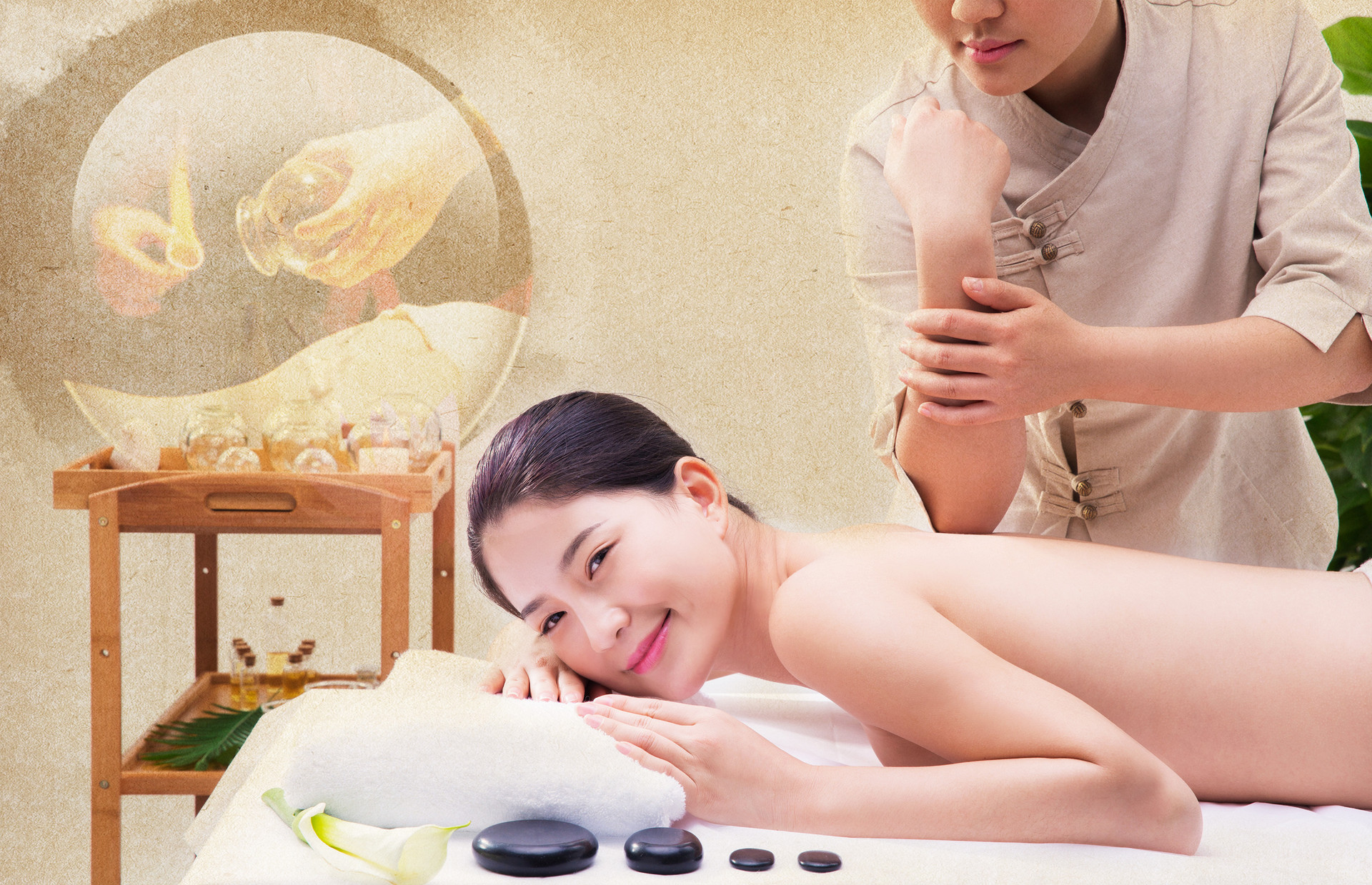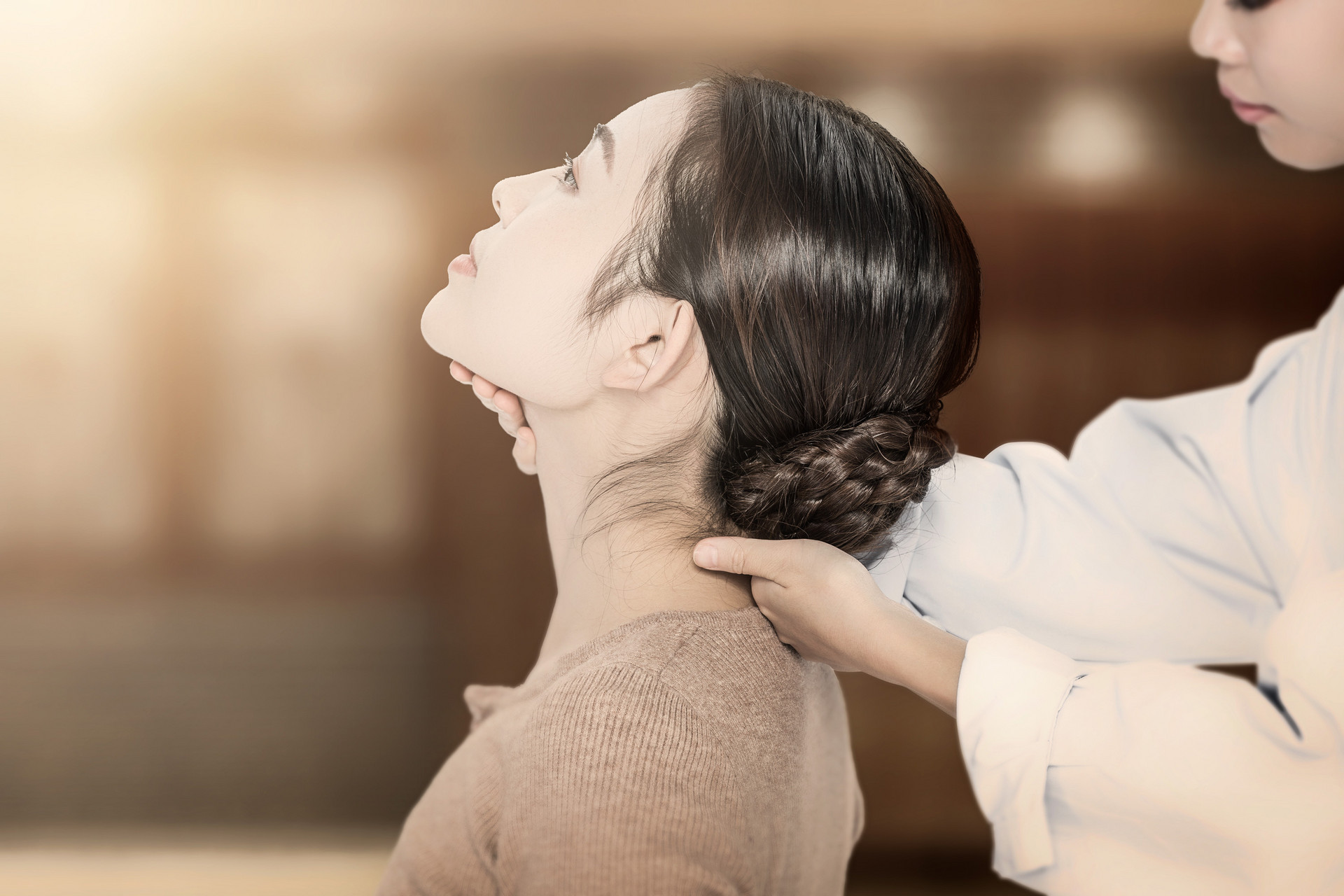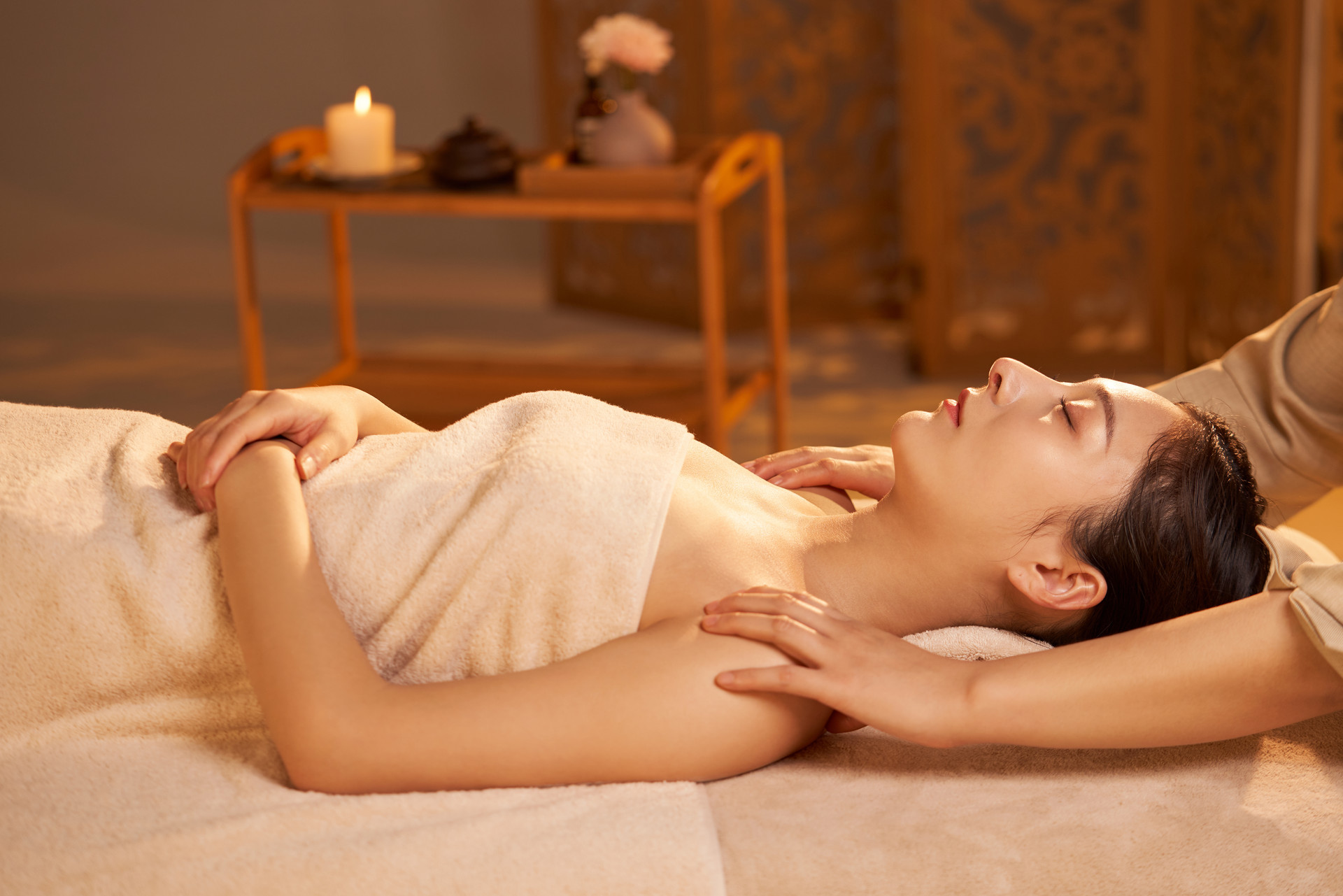1. Pressing Method
Operating Requirements
(1) Palm Pressing Method: The practitioner should relax the body, sink the shoulders, extend the back of the wrist, slightly lean the upper body forward, and exert force on the treated area with the upper limbs. Use one or both palms stacked on the treatment area, press down with the heel of the palm, reduce the pressure after obtaining qi, and then repeat the above actions.
(2) Finger Pressing Method: The practitioner clenches the fist with the thumb extended straight, and exerts force on the treated area with the thumb pad. Use the force of the wrist and arm to gradually press down from light to heavy. After stimulating the deep tissues, gradually reduce the pressure, and then repeat the above actions.
Key Points of Action
(1) The whole body of the practitioner should be relaxed naturally, shoulders sunk, elbows naturally bent, using the movement of the wrist to drive the palm or fingers, rhythmically pressing down on the treated area or acupoints in a smooth and steady manner.
(2) When using the finger pressing method, the thumb should be perpendicular to the treated area, applying gentle and steady force without shaking.
(3) The palm pressing method should be used with caution for the elderly and the weak, and it is prohibited for children. When operating on the chest, excessive force can cause rib fractures, so violence should be avoided. When operating on the abdomen, the palm of the hand should rise and fall with the patient's breathing, that is, press down slowly when exhaling and slowly relax when inhaling.
Clinical Application
The finger pressing method has a small contact area, concentrated force, and strong stimulation, which is suitable for acupoints throughout the body and has a strong analgesic effect. The palm pressing method has a large contact area and pressure, suitable for the waist, back, and abdominal area, with the functions of relaxing tendons and muscles, promoting blood circulation, opening blockages, dispersing cold, and rescuing reversal of yang.
2. Point Method
Operating Requirements
(1) Middle Finger Point Method: Sink the shoulders, slightly bend the elbows, extend the thumb, index finger, and middle finger naturally, place the thumb on the palm side of the middle finger, and place the index finger on the back of the middle finger, holding the middle finger with the other fingers and exerting force. Coordinate the force of the shoulder, arm, and wrist, concentrate the force on the fingertip, gradually press and stimulate the acupoints, and then lift the fingers gently.
(2) Sword Finger Point Method: Extend the index and middle fingers straight, and follow the same principles as the middle finger point method. Use the force of the shoulder, arm, and wrist to press the acupoints with the fingertips of the index and middle fingers together.
(3) Thumb and Finger Flexion Point Method: The practitioner clenches the fist, slightly deviates the wrist to the ulnar side, and places the thumb pad close to the back of the middle joint of the index finger. Use the protruding part of the flexed interphalangeal joint of the thumb to press the acupoints, also known as the clenched fist point method.
(4) Index Finger Flexion Point Method: The practitioner clenches the fist and uses the ulnar edge of the thumb to press the acupoints with the protruding part of the proximal interphalangeal joint of the flexed index finger.
Key Points of Action
(1) The force should be fixed and not slip during operation. The force should gradually increase and then gradually decrease, avoiding violent poking.
(2) In clinical practice, the choice of technique and force should be based on the patient's physique and condition, generally suitable for local soreness and swelling.
Clinical Application
The point method has strong and short-lasting stimulation compared to the pressing method. Its characteristics are a combination of strength and flexibility, lightness and strength, and strong penetration. It is widely used in clinical practice, suitable for acupoints throughout the body, and has the functions of opening blockages, replenishing and purging Qi, harmonizing yin and yang, promoting circulation, and relieving pain.
3. Pressing Method
Operating Requirements
(1) Finger Pressing Method: Use the thumb or the pads of the index, middle, and ring fingers to exert force on the treated area. Sink the shoulders, bend the elbows, hang the wrists, use the force of the shoulder, arm, and wrist to reach the fingertip, gradually press deeply without moving, and lift gently.
(2) Palm Pressing Method: Use one or both palms stacked on the treated area, lean the upper body forward, and use the force of the wrist and arm to gradually press deeply without moving, and lift gently.
(3) Elbow Pressing Method: Lean the upper body forward, sink the shoulders, bend the elbows to about 140°, exert force with the tip of the elbow and the protruding part of the ulnar bone on the surface of the body, coordinate the force with the trunk and upper limbs, press downwards vertically without moving, and make the force penetrate the tendons and bones.
Key Points of Action
(1) The point of force should be fixed and not slide, with deep and steady force, uniform and persistent. Avoid using violence or brute force.
(2) Single finger pressure method is prohibited on the chest wall, and palm pressure method and multi-finger pressure method can be used instead. The force should not be too strong to avoid damaging soft tissues or causing rib fractures.
(3) Elbow pressing method has strong stimulation and is mostly used for strong individuals and areas with developed muscles. It is prohibited for the elderly, the weak, and children.
Clinical Application
The pressing method has the functions of regulating meridians and collaterals, opening blockages, promoting blood circulation, relieving pain, relaxing muscles and tendons, calming the mind, dispelling wind, and dispersing cold. Among them, finger pressing method is mostly used for acupoints throughout the body; palm pressing method is mostly used for the waist, back, chest, and abdominal area; shooting pressing method is mainly used for the waist, buttocks, and thighs.



